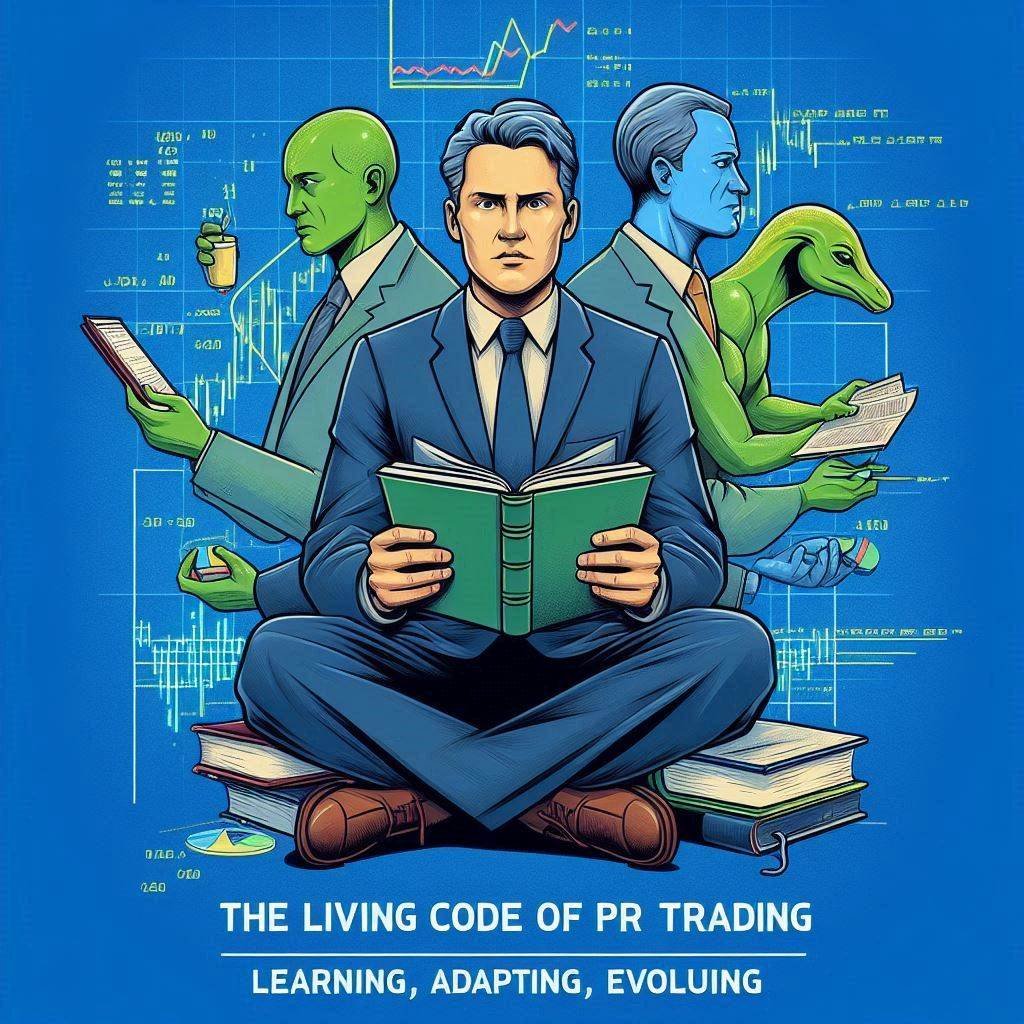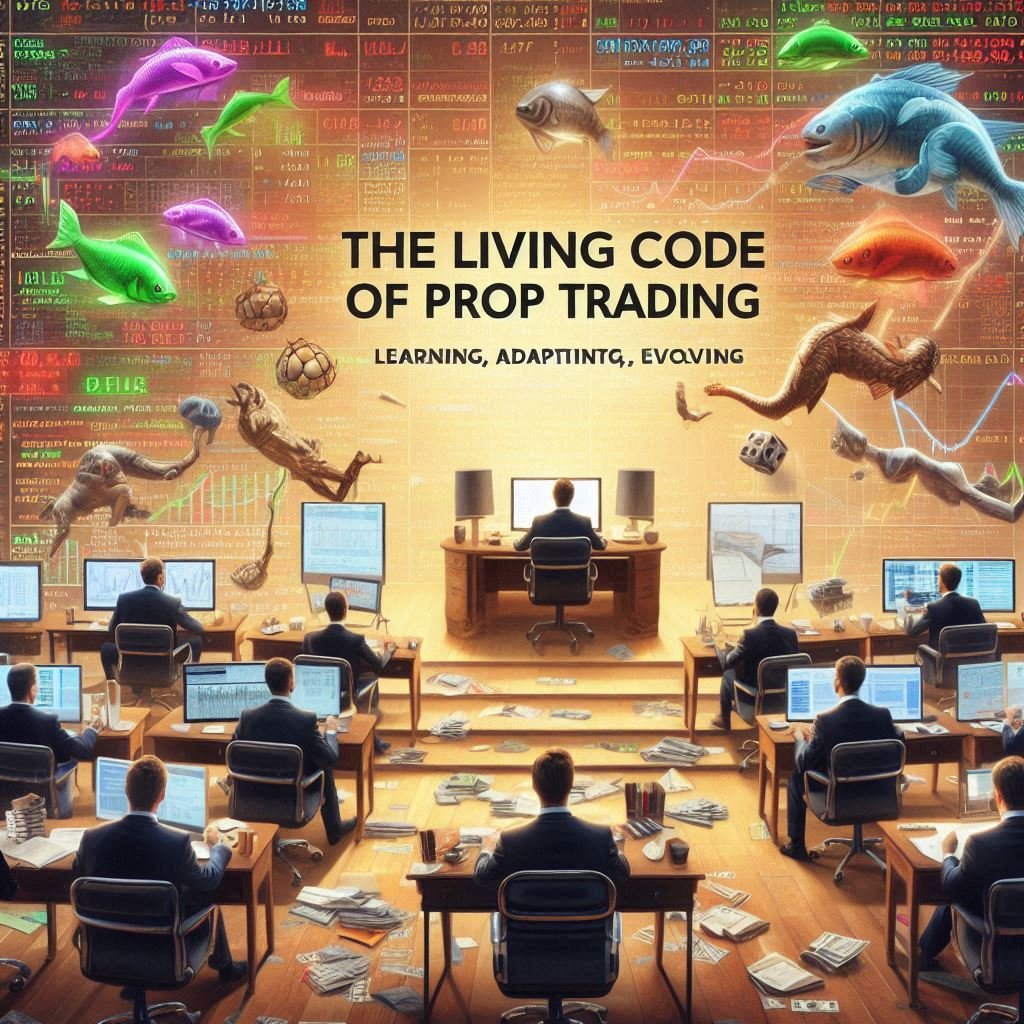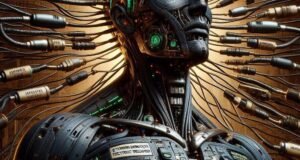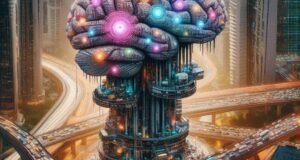Imagine a medieval castle under constant siege—not by armies, but by shifting winds, changing terrains, and invisible threats. The guards on its walls aren’t humans, but sentient stone golems. When one falls, it reshapes itself. When a wall cracks, it rebuilds overnight. The castle doesn’t collapse. It evolves. It heals.

Now, transport this idea to the high-octane world of prop trading. Replace golems with algorithms, walls with strategy parameters, and you get a revolutionary concept: Self-Healing Trading Algorithms.
These are not your average bots. They are living, learning machines, designed to spot their own flaws, diagnose underperformance, and rewire themselves autonomously—without waiting for human rescue.
The Fallibility of Code
In the traditional trading world, strategies are static: written once, tested, deployed—and then painfully debugged when they fail. But markets are organisms, not spreadsheets. They mutate. Correlations collapse. Liquidity dries. Regimes shift. A model that thrived last quarter might bleed capital today.
Here’s the painful truth: most code doesn’t fail because it’s broken. It fails because it stops evolving.
But in prop trading, where adaptability is everything, waiting for a human to step in is too slow. Enter the age of self-healing algorithms—systems that not only trade but monitor themselves like doctors, continuously testing for weakness, inefficiencies, and drift.
Objection 1:
“Machines fixing themselves? Isn’t that dangerous?”
Response:
Dangerous is a relative term. Leaving a flawed strategy running in a $10M book is far riskier than allowing a constrained algorithm to auto-correct a broken indicator weight or recalibrate to new volatility patterns.
Prop trading firms don’t build Frankenstein’s monsters. They build bounded, feedback-driven systems—with clear rules about what can change, how much, and when. Think of it as a ship with an auto-patching hull: it doesn’t build new sails or change direction on its own—it just plugs the leaks before they sink the voyage.

Objection 2:
“Isn’t this just machine learning with a fancy name?”
Response:
No—it’s machine learning with accountability.
Traditional ML models learn from data, but self-healing algorithms go further: they analyze performance drift, execution slippage, and market structure mismatches. They don’t just learn—they audit themselves, identify which part of their logic failed, and apply targeted micro-adjustments.
For example:
- A volatility arb strategy notices its edge degrading.
- It diagnoses the issue: signal lag due to a stale volatility estimator.
- It isolates that module, retrains it, and runs A/B simulations before deploying a patched version.
That’s not just learning. That’s regeneration—a concept prop trading is now embracing as a competitive edge.
The Metaphor of the Forest
Think of each algorithm as a tree in a prop trading forest. In traditional tech, when a tree gets sick, it’s cut down and replanted. In this forest, however, the trees shed diseased branches, grow new roots, and learn from neighboring flora. It’s not just survival—it’s evolution embedded in the soil.
And when you run a multi-strategy prop trading desk, with dozens of models competing for capital, the ability for these trees to self-heal means fewer dead assets, fewer manual interventions, and a garden that never stops growing.
Strategic Edge in Prop Trading
In the hyper-competitive world of prop trading, alpha isn’t just extracted from the market—it’s extracted from how you adapt to the market.
Self-healing algorithms offer an edge beyond speed or data—they offer resilience. While others are still diagnosing, your systems are already adjusting spreads, tuning entries, switching regimes, or quarantining defective sub-modules.
This transforms a firm from reactive to antifragile—a living system that gets stronger under stress.
In a world where black swans fly more often than they should, and yesterday’s alpha is today’s noise, having a self-healing system is not just smart—it’s necessary.
Prop trading is no longer just about strategy. It’s about structure. It’s about building an ecosystem of code that doesn’t just run, but learns how to survive.
Because in the modern market jungle, survival doesn’t go to the strongest algorithm—it goes to the one that can heal itself.




